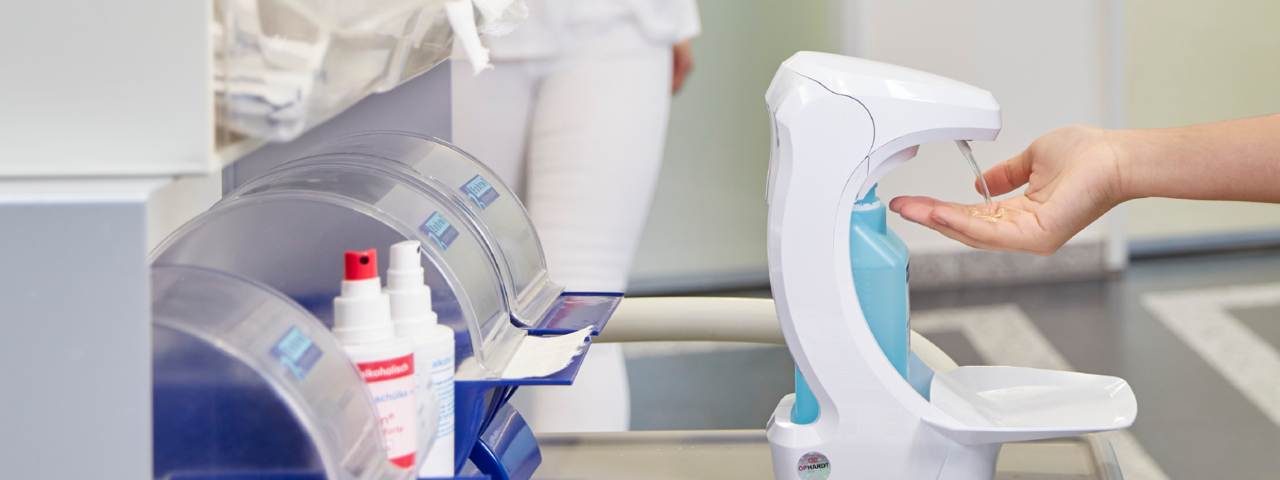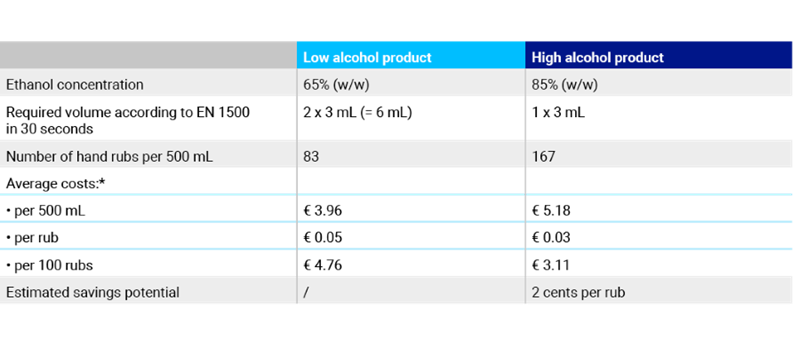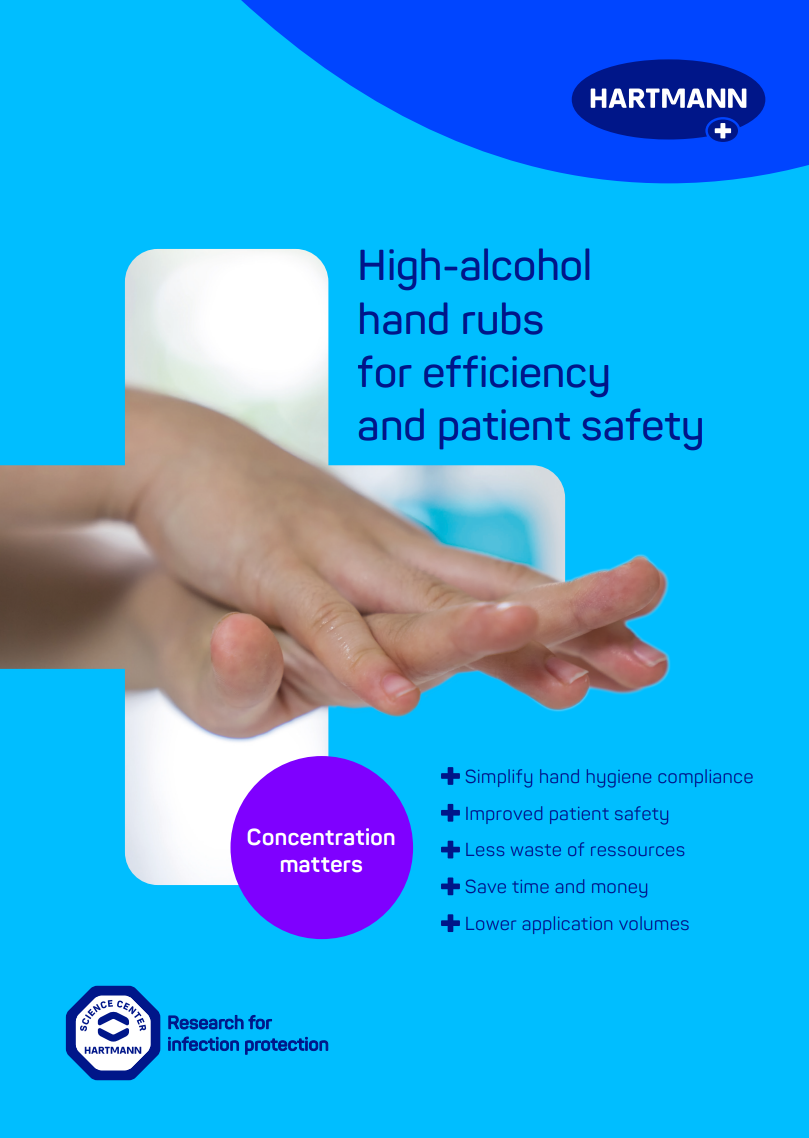Modes of Transmission


Even before the COVID-19 pandemic started, numerous alcohol-based hand rubs (ABHRs) with an alcohol content of less than 70% were available. Such low alcohol products also claim effectiveness based on EN 1500 for hygienic hand disinfection [1]. Although they usually appear cheaper than high alcohol products at first glance, patient safety and cost must be carefully considered when using them in healthcare settings. Upon closer inspection, high alcohol ABHRs have numerous advantages over low alcohol ones.
Ethanol has a broad bactericidal, virucidal, and yeasticidal activity that depends on both the concentration of ethanol in the product and the used application volume [2, 3].
Evaluation of data from more than 250 approved disinfectants [4] revealed: As the alcohol content decreases, the application volume needed to meet the requirements of EN 1500 increases. This means that low alcohol products are actually more expensive than high alcohol products when efficacy is taken into account.

In order to achieve sufficient antimicrobial efficacy and protect patients from healthcare-associated infections, high alcohol products require the use of lower application volumes than low alcohol products. Since more hand disinfections can be performed with the same volume of high alcohol ABHR than with low alcohol ABHR, bottles are emptied less quickly, and less waste is produced within the same amount of time. In addition, when using an 85% ethanol ABHR, only 2.55mL of pure ethanol is used per disinfection, compared to 3.9 mL of pure ethanol for a 65% ethanol low alcohol ABHR disinfection, making high alcohol products more sustainable overall.
When using high alcohol products, lower volumes of ABHR are required. In turn, using lower volumes means less frequent ABHR bottle changes and dispenser reprocessing, saving time for environmental cleaning staff. Beyond that, the drying time of high alcohol products is shorter, because drying time – and thus the time in which the hands cannot carry out other activities – decreases with increasing alcohol concentration[3]. This saves a lot of time, especially for healthcare workers, who frequently disinfect their hands to keep patients safe. In everyday practice, most healthcare workers also prefer lower ABHR volumes – between 1.5 and 2mL – than officially recommended [5]. Therefore, high alcohol products, which require lower volumes for efficacy, also score against low alcohol products.
High alcohol products have also been shown to have a higher efficacy in 15 seconds application time than low alcohol products [6]. This aspect is particularly relevant for daily practice as the estimated real-life application time is often only 15 seconds or even less [7].
All in all, high alcohol products are not only more cost effective, sustainable, and time efficient but also better meet the needs of healthcare workers, thereby supporting hand hygiene compliance and patient safety.


Sources:
1. DIN EN 1500: 1997-10. Chemical disinfectants and antiseptics - Hygienic handrub -
Test method and requirements (phase 2/step 2).
2. Kampf G, Kramer A (2004) Clin Microbiol Rev 17: 863-893.
https://doi.org/10.1128%2FCMR.17.4.863-893.2004
3. Macinga DR et al. (2014) BMC Infect Dis 14: 511.
https://doi.org/10.1186/1471-2334-14-511
4. Verbund für Angewandte Hygiene (VAH) Desinfektionsmittel-Liste des VAH.
https://vah-liste.mhp-verlag.de (accessed on August 31, 2023)
5.Wilkinson MAC et al. (2017) J Hosp Infect 95: 175-182.
https://doi.org/10.1016/j.jhin.2016.12.023
5. Dharan S et al. (2003) Infect Control Hosp Epidemiol 24: 160-164.
https://doi.org/10.1086/502182
6. Schulz-Stübner S et al. (2019) Infect Control Hosp Epidemiol 40: 609-612.
https://doi.org/10.1017/ice.2019.53